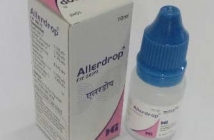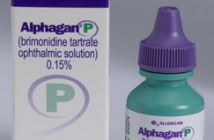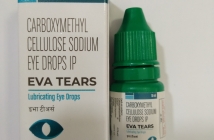Home / Categories / FROBEN SR

FROBEN SR
(10)
FLURBIPROFEN SR CAP
NSAIDS-ANTIPYRETIC/ANALGESICS
ABBOTT INDIA LTD.
Product Details
Flurbiprofen
A to Z Drug Facts
Flurbiprofen
Action
Indications
Contraindications
Route/Dosage
Interactions
Lab Test Interferences
Adverse Reactions
PrecautionsPatient Care Considerations
Administration/Storage
Assessment/Interventions
Patient/Family Education
(FLURE-bih-PRO-fen)Ansaid,  Alti-Flurbiprofen, Apo-Flurbiprofen, Froben, Froben SR, Novo-Flurbiprofen, Nu-FlurbiprofenFlurbiprofen SodiumOcufenClass: Analgesic/NSAID
Alti-Flurbiprofen, Apo-Flurbiprofen, Froben, Froben SR, Novo-Flurbiprofen, Nu-FlurbiprofenFlurbiprofen SodiumOcufenClass: Analgesic/NSAID
 Action Decreases inflammation, pain and fever, probably through inhibition of cyclooxygenase activity and prostaglandin synthesis.
Action Decreases inflammation, pain and fever, probably through inhibition of cyclooxygenase activity and prostaglandin synthesis.
 Indications Systemic: Treatment of rheumatoid arthritis and osteoarthritis. Ophthalmic: Inhibition of intraoperative miosis. unlabeled use(s): Treatment of juvenile rheumatoid arthritis; migraine; dysmenorrhea; sunburn; mild to moderate pain; acute gout; ankylosing spondylitis; tendonitis; bursitis; inflammation after cataract surgery; uveitis.
Indications Systemic: Treatment of rheumatoid arthritis and osteoarthritis. Ophthalmic: Inhibition of intraoperative miosis. unlabeled use(s): Treatment of juvenile rheumatoid arthritis; migraine; dysmenorrhea; sunburn; mild to moderate pain; acute gout; ankylosing spondylitis; tendonitis; bursitis; inflammation after cataract surgery; uveitis.
 Contraindications Systemic/ophthalmic: Patients in whom aspirin, iodides, or any NSAID has caused allergic-type reactions; dendritic keratitis. Ophthalmic: Epithelial herpes simplex keratitis.
Contraindications Systemic/ophthalmic: Patients in whom aspirin, iodides, or any NSAID has caused allergic-type reactions; dendritic keratitis. Ophthalmic: Epithelial herpes simplex keratitis.
 Route/Dosage
Route/Dosage
Rheumatoid Arthritis or Osteoarthritis
ADULTS: PO 200 to 300 mg in divided doses bid to qid; do not exceed 300 mg/day.
Dysmenorrhea
ADULTS: PO 50 mg qid.
Inhibition of Intraoperative Miosis
ADULTS: Topical 1 drop of 0.03% solution q 30 min beginning 2 hr before surgery.
 Interactions
Interactions
Beta-blockers: Decreased antihypertensive effect of beta-blocker. Cyclosporine: Increased risk of nephrotoxicity. Lithium: Increased levels and effects of lithium. Loop diuretics: Decreased diuretic effect. Methotrexate: Increased methotrexate levels. Salicylates: Increased risk of GI toxicity. Warfarin: Increased risk of gastric erosion and bleeding.
 Lab Test Interferences May prolong bleeding time.
Lab Test Interferences May prolong bleeding time.
 Adverse Reactions
Adverse Reactions
CV: CHF; hypotension; hypertension; peripheral edema; fluid retention; vasodilation. CNS: Dizziness; drowsiness; vertigo; headaches; nervousness; migraine; anxiety; confusion. DERM: Pruritus; erythema; photosensitivity; urticaria. EENT: Systemic use: Blurred vision; changes in color vision; hearing disturbances; taste changes. Ophthalmic use: Ocular irritation; transient stinging and burning of eyes. GI: Heartburn; dyspepsia; nausea; vomiting; anorexia; diarrhea; constipation; increased or decreased appetite; indigestion; GI bleeding; ulceration. GU: Hematuria; proteinuria; renal insufficiency; glomerular and interstitial nephritis; acute renal failure with pre-existing renal dysfunction. HEMA: Anemia; bone marrow depression; neutropenia; leukopenia; hypocoagulability. RESP: Bronchospasm; laryngeal edema; dyspnea; hemoptysis; shortness of breath. OTHER: Hyperglycemia; hypoglycemia; hyponatremia.
 Precautions
Precautions
Pregnancy: Category B (flurbiprofen); Category C (flurbiprofen sodium). Lactation: Excreted in breast milk. Children: Safety and efficacy not established. Elderly: Increased risk of adverse reactions. GI effects: Serious GI toxicity (eg, bleeding, ulceration, perforation) can occur at any time, with or without warning symptoms. Hypersensitivity: May occur; use caution in aspirin-sensitive individuals because of possible cross-sensitivity. Renal effects: Acute renal insufficiency, interstitial nephritis, hyperkalemia, hyponatremia, and renal papillary necrosis may occur. Renal impairment: Assess function before and during therapy, because NSAID metabolites are eliminated renally.
PATIENT CARE CONSIDERATIONS
 Administration/Storage
Administration/Storage
- Give with food, milk or antacids.
- Have patient remain in an upright position for 15 to 30 min after administration, if possible.
- Store at room temperature in tightly closed, light-resistant container.
 Assessment/Interventions
Assessment/Interventions
- Obtain patient history, including drug history and any known allergies. Note hypersensitivity to aspirin products, renal impairment, ulcer disease or bleeding disorders.
- Monitor effectiveness of drug therapy by evaluating joint symptoms and pain regularly.
- For patients undergoing prolonged or high-dose therapy, monitor hemoglobin and renal and hepatic function.
- Be aware that effects of this drug may mask signs and symptoms of infection.
OVERDOSAGE: SIGNS & SYMPTOMS Drowsiness, dizziness, mental confusion, disorientation, lethargy, numbness, vomiting, nausea, gastric upset, abdominal pain, headache, convulsions, renal failure, coma
 Patient/Family Education
Patient/Family Education
- Instruct patient to take medication as prescribed, not to skip a dose, and not to double up doses if close to next dose.
- Advise diabetic patient to monitor blood glucose levels carefully during treatment.
- Warn patients about the potential for bleeding and the need to notify other health care professionals that drug is being taken.
- Instruct patient using ophthalmic preparation to use great care to prevent contamination of solution.
- Instruct patient to report the following symptoms to physician: Bleeding, bruising, dyspnea, edema (oral drug); burning or stinging, tearing, photophobia (ophthalmic drug).
- Advise patient that drug may cause drowsiness and to use caution while driving or performing other tasks requiring mental alertness.
- Tell patient to avoid intake of alcoholic beverages, aspirin or other otc medications without consulting physician.
Books@Ovid
Copyright © 2003 Facts and Comparisons
David S. Tatro
A to Z Drug Facts
Substitutes
Substitutes not found for FROBEN SR









